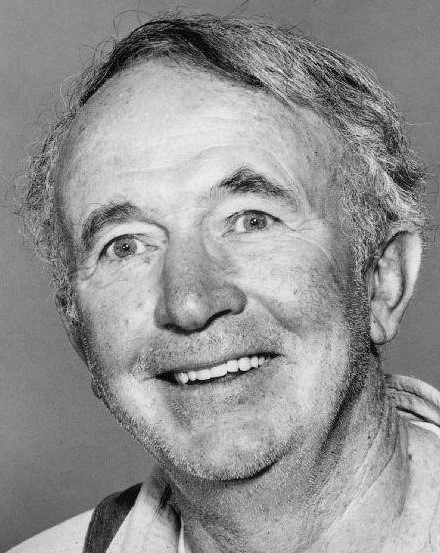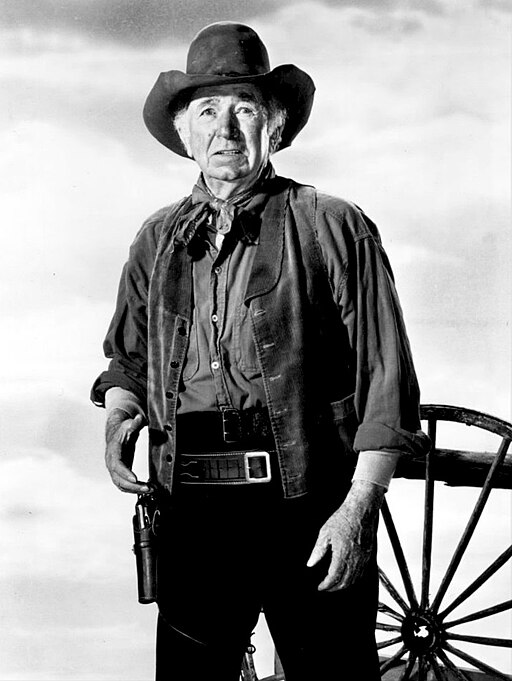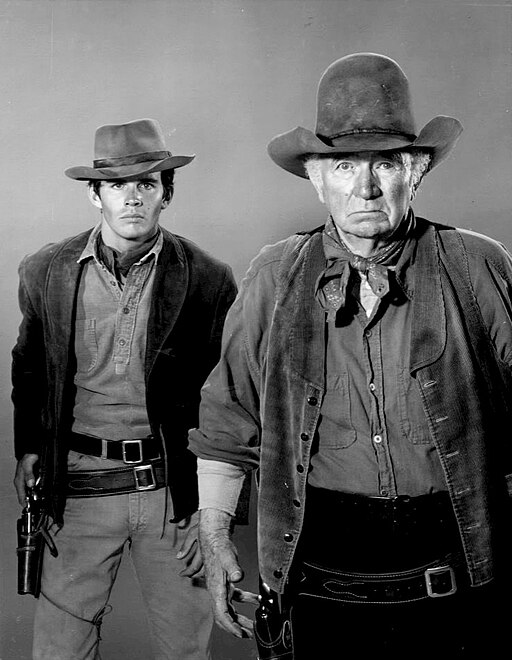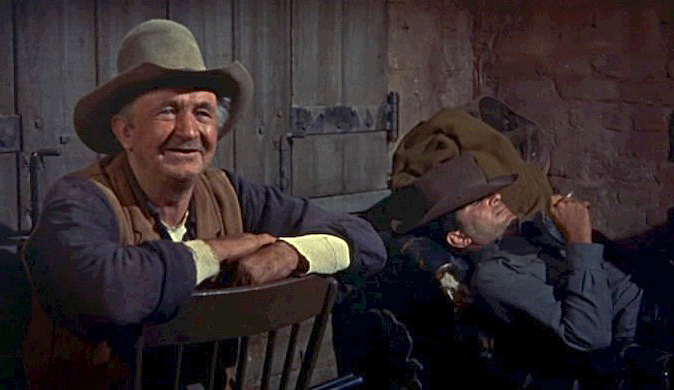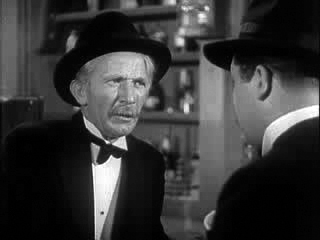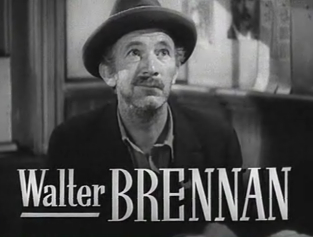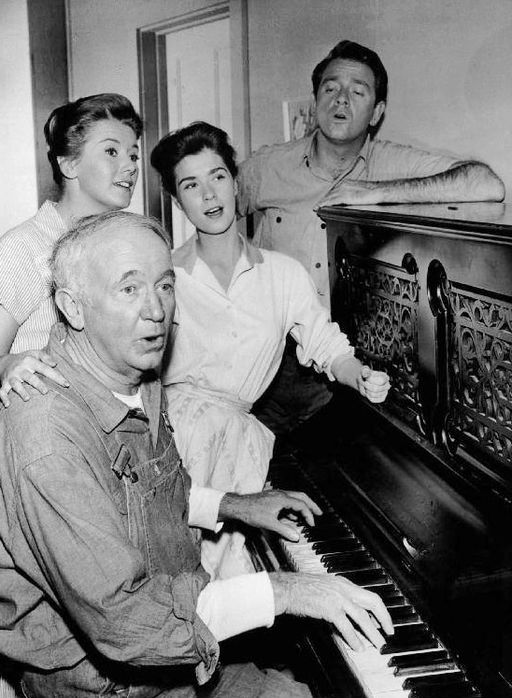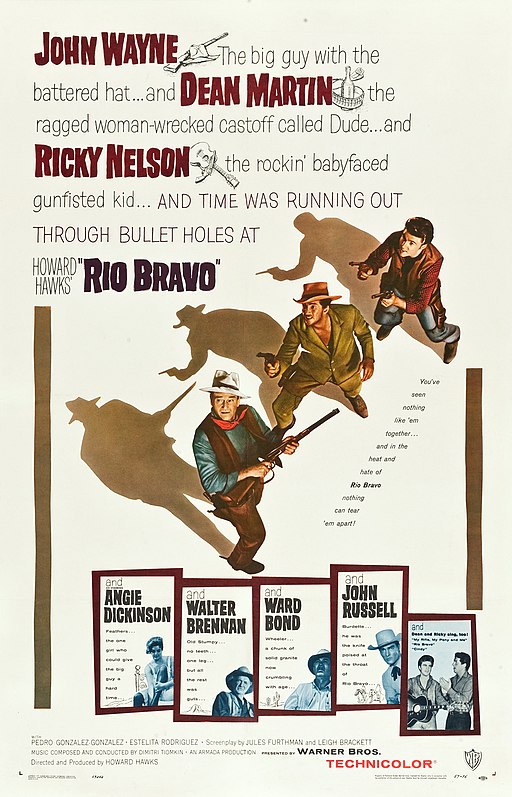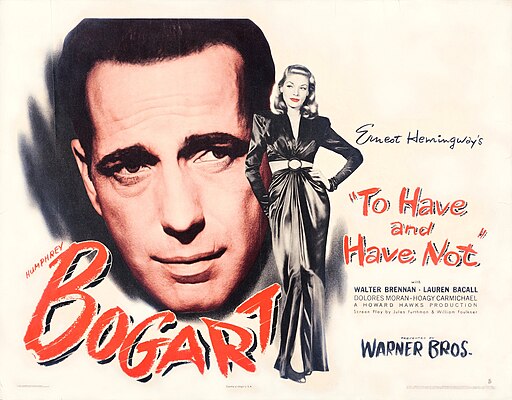Walter Brennan
back| Full Name | Walter Andrew Brennan |
| Stage Name | Walter Brennan |
| Born | July 25, 1894 |
| Birthplace | Lynn, Massachusetts, USA |
| Died | September 21, 1974 |
| Buried | San Fernando Mission Cemetery, Mission Hills, Los Angeles, California, USA |
| Married to | Ruth Wells |
| Children | Arthur, Ruth, and Andy Brennan |
| Notable films | Come and Get It (1936) - Kentucky (1938) - The Westerner (1940) - To Have and Have Not (1944) - My Darling Clementine( 1946) - Red River (1948) - Rio Bravo (1959) |
Walter Brennan
The Dean of Hollywood Character Actors
Walter Brennan was a pivotal figure in American cinema, renowned for his versatility and authentic portrayals in character roles. A veteran of World War I, he began his acting career in the 1930s, quickly gaining recognition for his distinctive voice and rustic demeanor.
Brennan made history by winning three Academy Awards for Best Supporting Actor for his roles in "Come and Get It" (1936), "Kentucky" (1938), and "The Westerner" (1940), a record that underscores his exceptional talent in supporting roles.
Related
Walter Brennan (1894 – 1974)
Biography and Analysis of his Career
Walter Brennan was born on July 25, 1894, in Lynn, Massachusetts. Growing up in an environment far removed from the glitz of Hollywood, he had a modest upbringing. His parents, Irish immigrants, instilled in him a strong work ethic and a down-to-earth sensibility that would later become hallmarks of his acting style.
In his early years, Brennan showed little interest in acting. He was more inclined towards engineering, which led him to study at Rindge Technical High School in Cambridge, Massachusetts. However, the outbreak of World War I dramatically altered his life's trajectory. Brennan enlisted in the U.S. Army and served in France during the war. It was during this time that he sustained injuries that would lead to the loss of most of his teeth, an affliction that later contributed to his distinctive speech in his film roles.
Path Towards Success: After his military service, Brennan ventured into a variety of jobs, including real estate and financial speculation. However, the Wall Street Crash of 1929 wiped out his investments, forcing him to seek a new career path. This turn of events led him to Hollywood, where he began his acting career in the early 1930s.
Brennan's early roles were mostly uncredited parts in various films. His unique look and voice, however, soon caught the attention of filmmakers. He started gaining more substantial roles, often portraying older, rustic characters despite being relatively young.
Rise to Fame: Brennan's breakthrough came with his role in "Come and Get It" (1936), for which he won his first Academy Award for Best Supporting Actor. This victory marked the start of a highly successful career in Hollywood. He won two more Oscars for "Kentucky" (1938) and "The Westerner" (1940), making him the first actor to win three Academy Awards and setting a record for the most wins in the Best Supporting Actor category.
Marriages and Passions: In 1920, Brennan married Ruth Wells, with whom he had three children: Arthur, Ruth, and Andy. His family life was relatively private, and he was known to be a devoted husband and father. Outside of acting, Brennan had a passion for ranching and horse breeding, owning a ranch in Moorpark, California. This interest in the rustic lifestyle often reflected in the characters he portrayed on screen.
Later Years and Death: Throughout the 1950s and 1960s, Brennan continued to work prolifically in film and television. He starred in the popular TV series "The Real McCoys," which ran from 1957 to 1963, showcasing his versatility as an actor.
Walter Brennan's life came to an end on September 21, 1974, in Oxnard, California. He died from emphysema, a lung condition often exacerbated by smoking, which was prevalent during his era. Brennan was 80 years old at the time of his death. His passing marked the end of an era in Hollywood, but his legacy as one of the finest character actors in American cinema continues to endure.
Walter Brennan in Meet John Doe (1941):
Analysis of the Acting Style of Walter Brennan:
Walter Brennan's acting style was characterized by a unique blend of authenticity, versatility, and a deeply ingrained sense of character that made him one of the most memorable and endearing character actors in Hollywood history.
Rustic Authenticity and Believability:
Brennan's most defining characteristic was his ability to bring an authentic rustic charm to his roles. Whether he was playing a grizzled prospector, a wise old judge, or a crafty sidekick, he infused his characters with a sense of lived-in realism. His weathered face, distinctive voice (partly a result of losing teeth in World War I), and natural demeanor made his characters feel like genuine individuals rather than mere caricatures.
Versatility and Range:
Despite often being typecast in "old man" roles, even early in his career, Brennan exhibited remarkable versatility. He could seamlessly transition from comedic roles to dramatic ones, imbuing each character with depth and nuance. In comedies, his timing and expression were impeccable, often serving as a comic foil or providing light-hearted relief. In dramatic roles, he conveyed a profound depth of emotion, demonstrating his ability to handle complex and layered characters.
Subtle Physicality and Voice Modulation:
Brennan had a subtle but effective physical presence. He could express a wealth of emotion and meaning with a simple gesture, a shift in posture, or a change in facial expression. His voice was another tool he used masterfully. With its distinctive timbre and ability to convey a wide range of emotions—from gruffness and authority to warmth and gentleness—Brennan's voice was as much a part of his acting arsenal as his physical presence.
Character Interpretation and Depth:
Brennan had a knack for bringing depth to even the most stereotypical roles. He often played characters that were much older than his actual age, but he did so with such skill that the audience would forget the age difference. His characters were often multi-dimensional, with a mix of toughness and tenderness, wisdom and wit, making them relatable and memorable.
Impact and Legacy:
Brennan's impact on the film industry was significant. He was among the first actors to win multiple Academy Awards, and his success helped elevate the status of supporting actors in Hollywood. His ability to steal scenes even when sharing the screen with leading stars of the time showed his prowess as an actor.
Notable Movies starring Walter Brennan:
- "Come and Get It" (1936): This film earned Brennan his first Academy Award for Best Supporting Actor.
- "Kentucky" (1938): Brennan won his second Oscar for Best Supporting Actor for his role in this film.
- "The Westerner" (1940): This performance earned Brennan his third Academy Award for Best Supporting Actor, making him the first actor to win three Oscars and the only one to win three for Best Supporting Actor.
- "To Have and Have Not" (1944): A classic film noir, where Brennan starred alongside Humphrey Bogart and Lauren Bacall.
- "My Darling Clementine" (1946): A well-regarded Western directed by John Ford, in which Brennan played a notable supporting role.
- "Red River" (1948): A critically acclaimed Western featuring Brennan in a key role alongside John Wayne.
- "Rio Bravo" (1959): Another classic Western, directed by Howard Hawks, where Brennan starred with John Wayne and Dean Martin.
Trivia
A] Why did Walter Brennan walk with a Limp?
Walter Brennan walked with a limp due to an injury he sustained early in his life. There are varying accounts regarding the cause of this injury. One common explanation is that he was injured during his service in World War I, although this is not definitively confirmed. Another account suggests that the injury was the result of an accident in which a large piece of heavy machinery fell on him, causing significant injury to his legs.
Regardless of the precise cause, this injury resulted in Brennan developing a noticeable limp, which he often incorporated into his characters in his film roles. This aspect of his physicality became a defining feature of many of his performances, adding to the authenticity and depth of the characters he portrayed.
B] How Tall was Walter Brennan?
Walter Brennan was approximately 5 feet 11 inches (180 cm) tall. His height, combined with his distinctive voice and physical characteristics, contributed to his commanding screen presence and versatility as an actor. Brennan's stature allowed him to convincingly portray a wide range of characters throughout his career in Hollywood.
Memorable Quotes from Walter Brennan:
Walter Brennan, known for his distinctive voice and memorable characters, delivered many memorable lines throughout his extensive film career. Some of these quotes have become iconic in the realm of classic cinema. Here are a few notable examples:
From "The Westerner" (1940):
- "Judge Roy Bean: I understand you have a great respect for the law."
- This line reflects the irony and wit of Brennan's character, Judge Roy Bean, who was known for his eccentric and often self-serving interpretation of the law.
From "To Have and Have Not" (1944):
- "Eddie: Was you ever bit by a dead bee?"
- This quirky and humorous line is delivered by Brennan's character Eddie, showcasing his ability to inject humor and uniqueness into his roles.
From "My Darling Clementine" (1946):
- "Old Man Clanton: When you pull a gun, kill a man."
- Playing the role of Old Man Clanton, Brennan delivers this line with a chilling gravitas, encapsulating the ruthless nature of his character.
From "Rio Bravo" (1959):
- "Stumpy: I'm gettin' kinda tired of you stringin' me all the time, John T."
- As Stumpy, Brennan brings a mix of humor and gruffness to the character, balancing the tension in this classic Western.
From "Red River" (1948):
- "Nadine Groot: Cherry was right. You're soft. You should have let 'em kill me. I'd rather be dead than living with a snake."
- Brennan's portrayal of Nadine Groot is filled with gritty realism, and this line is a testament to his ability to convey deep emotions.
From "Meet John Doe" (1941):
- "The Colonel: Beany, you're going to have a tough time trying to beat that one."
- This line, delivered with Brennan's characteristic wit, reflects his character's savvy and street-smart attitude.
Awards and Recognition:
Walter Brennan, renowned for his exceptional character acting, received numerous accolades throughout his career, particularly from the Academy Awards. Here's an overview of the major awards and nominations he received:
Academy Awards (Oscars):
- 1936: Won the Academy Award for Best Supporting Actor for "Come and Get It." This win was notable as it was the first year the Supporting Actor category was introduced.
- 1938: Won his second Academy Award for Best Supporting Actor for his role in "Kentucky."
- 1940: Brennan won his third Oscar for Best Supporting Actor for his performance in "The Westerner." This achievement made him the first actor to win three Academy Awards and the only actor to have won three Best Supporting Actor Oscars.
Other Nominations and Awards:
- While most renowned for his three Oscar wins, Brennan's career did not see a wide array of other awards or nominations, partly due to the era in which he was most active. The 1930s to 1950s were a time when fewer award ceremonies were held, and the industry was less focused on the array of awards that are common today.
- Brennan's work was also primarily in supporting roles, a category that historically received less recognition outside the Oscars during that period.
- Despite this, Brennan was highly regarded in the industry for his talent and versatility, and his contributions to film were widely acknowledged by his peers and audiences alike.
Movies featuring Walter Brennan:
1920s:
- 1925: The Roughneck
- 1927: The Lariat Kid
1930s:
- 1930: The Lone Star Ranger, The King of Jazz, See America Thirst, The Green Goddess
- 1931: Quick Millions, Fair Warning, Heroes of the Flames, Is There Justice?, Honeymoon Lane, Texas Cyclone, Bad Company, Neck and Neck, Many a Slip
- 1932: Two-Fisted Law, The All American, Fighting for Justice, Miss Pinkerton, Law and Order, Hello Trouble, Scandal for Sale, The Vanishing Frontier, Horse Feathers, The Fourth Horseman, Afraid to Talk
- 1933: Man of Action, Goldie Gets Along, Parachute Jumper, The Phantom Broadcast, The Crosby Case, When a Man Rides Alone, The Cohens and Kellys in Trouble, The Cohens and the Kellys in Hollywood, Laughing at Life, Rusty Rides Alone, Meet the Baron, One Year Later, My Woman
- 1934: The Crosby Case, I'll Tell the World, Wharf Angel, You Can't Buy Everything, Good Dame, Sing and Like It, Death on the Diamond, The Life of Vergie Winters, The Affairs of Cellini, The Poor Rich, There's Always Tomorrow, The Merry Widow, The Trail Beyond, Peck's Bad Boy
- 1935: Helldorado, Princess O'Hara, Party Wire, Spring Tonic, Man on the Flying Trapeze, Woman Wanted, Red Blood of Courage, Lady Tubbs, Bride of Frankenstein, Mystery Woman, Metropolitan, Barbary Coast, The Wedding Night, We're in the Money, Transient Lady, Northern Frontier, The Murder Man, The Cowboy Millionaire
- 1936: Fury, My Man Godfrey, These Three, Three Godfathers, The Moon's Our Home, Sworn Enemy, The Road to Glory, The Invisible Ray, Banjo on My Knee, Come and Get It, The Princess Comes Across, Two in a Crowd, The General Died at Dawn, The Accusing Finger
- 1937: When Love Is Young, A Star Is Born, The Buccaneer, When's Your Birthday?, The Last Gangster, Internes Can't Take Money, The Affairs of Cappy Ricks, This Is My Affair, Stand-In
- 1938: The Adventures of Tom Sawyer, The Texans, Kentucky, The Goldwyn Follies, Mother Carey's Chickens, The Cowboy and the Lady
- 1939: They Shall Have Music, Stanley and Livingstone, Everything's on Ice, The Story of Vernon and Irene Castle, The Long Shot, Allegheny Uprising
1940s:
- 1940: The Westerner, Maryland, Northwest Passage, Edison, the Man, Meet John Doe
- 1941: Nice Girl?, This Woman Is Mine, Sergeant York, Swamp Water, Meet John Doe
- 1941: Rise and Shine
- 1942: The Pride of the Yankees, The Talk of the Town, Hangmen Also Die!, Tales of Manhattan
- 1943: Slightly Dangerous, The North Star, Hangmen Also Die!
- 1944: To Have and Have Not, The Princess and the Pirate, Home in Indiana
- 1945: A Stolen Life, Dakota
- 1946: My Darling Clementine, Nobody Lives Forever, Centennial Summer
- 1947: Driftwood, Scudda Hoo! Scudda Hay!
- 1948: Red River, Blood on the Moon, The Green Promise, Rachel and the Stranger
- 1949: Task Force, Brimstone, The Green Promise, Sand
1950s:
- 1950: Curtain Call at Cactus Creek, The Showdown, A Ticket to Tomahawk, Surrender
- 1951: Along the Great Divide, The Wild Blue Yonder, Best of the Badmen, Lure of the Wilderness
- 1952: Return of the Texan, The Pride of St. Louis, Glory Alley, The Winning Team
- 1953: Sea of Lost Ships, Bad for Each Other, Drums Across the River
- 1954: The Far Country
- 1955: The Kentuckian, Bad Day at Black Rock
- 1956: Good-bye, My Lady
- 1957: Tammy and the Bachelor
- 1958: God's Little Acre, The Proud Rebel
- 1959: Rio Bravo
1960s:
- 1965: Those Calloways
- 1967: The Gnome-Mobile
- 1969: The Over-the-Hill Gang
1970s:
- 1970: Smoke
- 1971: Scandalous John, Support Your Local Gunfighter
- 1972: Home for the Holidays
- 1974: The Over-the-Hill Gang Rides Again

